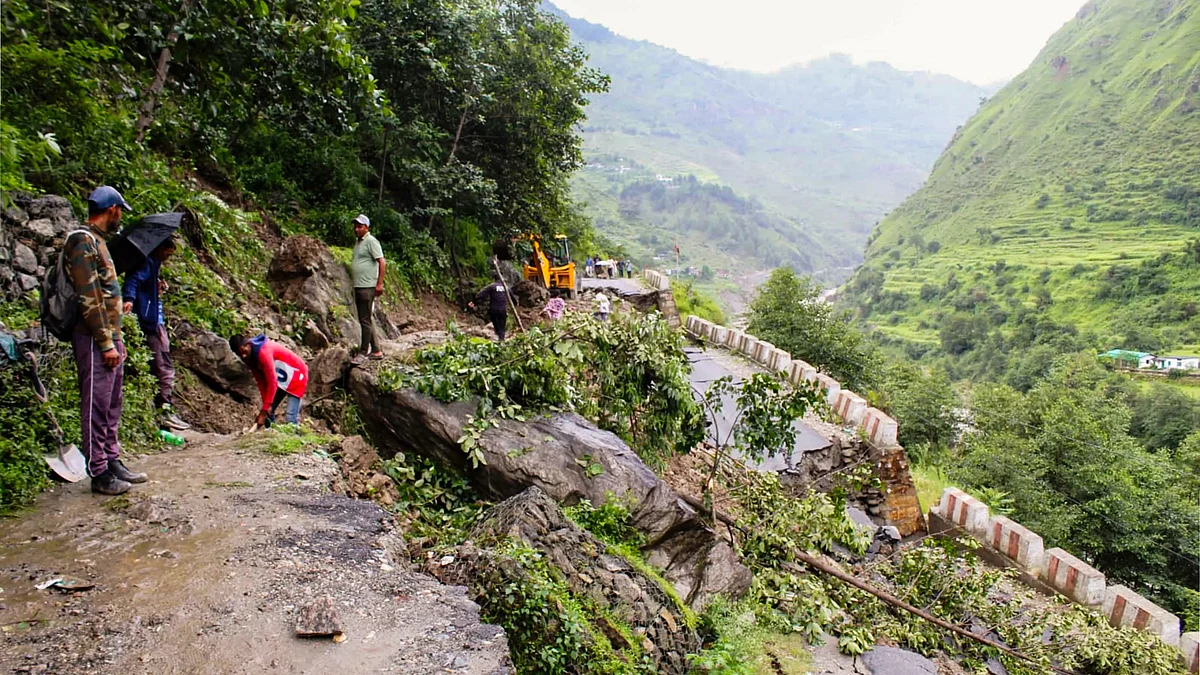Dharali forgotten: Uttarakhand okays Netala bypass through fragile eco-zone
The eco-zone, part of the Char Dham route, has been cleared for ‘strategic importance’, ignoring warnings on environmental safeguards

· Approval for construction of a strategic road as part of Char Dham route
· Uttarakhand forest department approved the project for the BRO
· An 8.70-km stretch from Hina to Tekhla in Bhagirathi eco-sensitive zone
· Diversion involves 17.5 hectares of forest land and felling of 2,751 trees
Uttarakhand has once again placed short-term strategic interests above long-term ecological integrity by providing clearance to the contentious Netala bypass in the Bhagirathi Eco‑Sensitive Zone (BESZ). This decision, close on the heels of the recent devastating flash floods in Dharali (Uttarkashi), Tharali and other parts of the hill state defies logic.
Less than three weeks before the 5 August tragedy in Dharali, the forest department had green-signalled the bypass on the pretext of ‘exemption for “strategic” projects’, sidestepping Central environmental oversight.
The project — barely 70 km upstream from Dharali — involves the felling of 2,751 trees and diversion of 17.5 hectares of forest land from Hina to Tekhla for this strategic route as part of the Char Dham all-weather road project. This had earlier been rejected by a Supreme Court-appointed panel, which had called the alignment geologically unsafe and recommended that the existing road be widened instead.
The Dharali flood was nothing less than a giant ecological warning. Experts like geologist Navin Juyal and environmentalist Hemant Dhyani — who were part of the Supreme Court panel — have consistently cautioned that the current road design, with its uniform 10m width, increases slope instability. They proposed a disaster-resilient alternative involving elevated corridors and fewer ecological disruptions. These recommendations, according to media reports, were disregarded.
Environmental scientists including D.P. Dobhal, N. Bala and Vimlendu Jha have consistently warned that development must heed the unique fragility of the Himalayan ecosystems. Yet the Dharali flood, which razed countless businesses, homes, and livelihoods, showed how these warnings have fallen on deaf ears.
Local communities are not silent either. Uttarkashi residents and environmental groups formed human chains and filed petitions demanding a halt to bypass construction, according to reports. Social media conversations also reflect this deep frustration. One user wrote on Reddit: “The government seems to be ignoring the concerns of the local people.” Another added: “Transplanting trees… Barely 20 % survive… Human‑induced changes will result in more landslides.”
The latest approval by the forest department follows a disturbing pattern: institutions prioritise “strategic connectivity” even in zones designed to protect the origin of the Ganga. Forest clearance is being bypassed, Supreme Court directives are brushed aside, and citizens and scientists are ignored — all at the risk of irreversible environmental collapse.
In a region where monsoon-soaked slopes and glacier-fed streams already threaten human settlements, such decisions are more than bureaucratic missteps — they are veritable invitations to disaster. Until the government acknowledges and internalises this, the Himalayas will continue to bleed under India's march toward infrastructural grandeur.
With agency inputs
Follow us on: Facebook, Twitter, Google News, Instagram
Join our official telegram channel (@nationalherald) and stay updated with the latest headlines
